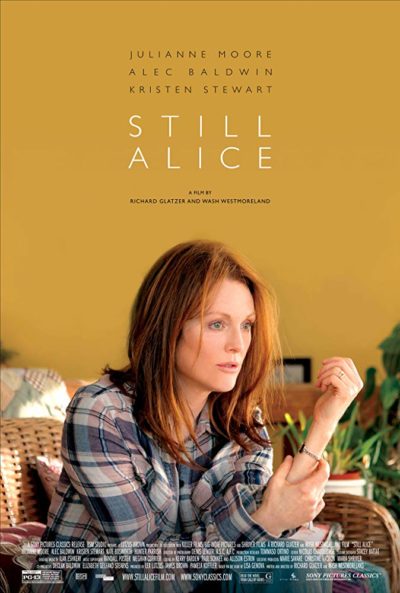
An afternoon off and a chance to see a double bill of films that ended up having more in common than I expected. Both are mostly set in modern day New York and both stories are permeated with a sense of impending loss.
Love is Strange stars Alfred Molina (George) and John Lithgow (Ben) as a couple who have been together for nearly 40 years, and who take advantage of recent law changes to get married. However, after George loses his job, they are forced to sell their apartment and – whilst looking for a new one – live separately with friends. In Still Alice, Julianne Moore (Alice) is a celebrated linguistics professor who, at the age of 50, is diagnosed with early onset Alzheimer’s. It is a condition that rapidly causes her health to deteriorate.
The films share the same strengths. Primarily their acting. Molina and Lithgow make a truly convincing long term couple, and Lithgow is especially good as he starts to realise that he is really an inconvenience to the people he is staying with. That film also features an excellent supporting turn as Marisa Tomei as Kate, the wife of Ben’s nephew, who’s marriage and relationship with her son are put under strain during Ben’s stay. Julianne Moore gives a towering performance in Still Alice. Justifying her recent Oscar award with a performance that meticulously takes us through the various stages of her disease without ever being overly dramatic or showy. Alec Baldwin lends solid support as her husband, John, and Kristen Stewart, as her youngest daughter, underlines the promise she was showing before becoming involved in the turgid Twilight franchise.
The other thing the two films have in common as the most affecting and perceptive scenes are of the small understated moments. In Love is Strange, one scene where Ben keeps interrupting Kate when she is trying to work and she tries to hide her annoyance tells us all we need to know about their increasingly strained relationship. The final moments of a rare evening out for Ben and George towards the end of the film are especially subtle and poignant. In Still Alice, just after Alice is first diagnosed, John takes out all of his frustration and anger on a slow running hospital lift. It is almost a throwaway scene but one that feels utterly real. The changes in Alice’s relationships with her daughters is also very well handled. She gradually becomes much closer with her youngest and their Skype conversations are touching without being mawkish. Whereas her eldest becomes just a little bit frosty when she receives some devastating news herself.
Inevitably, the films also share the same weaknesses. The arc of the story in each case is pretty obvious from early on, so they both lack any real dramatic tension, and they both feel a bit slight, despite addressing important subject matters. Additionally Love is Strange feels like it suffered in the editing. It has an odd sub-plot about stolen library books that goes nowhere, and Kate’s relationship with her husband is evidently rocky before Ben arrives, and he seems to be under pressure at work, but that story line is under developed. Still Alice suffers from having some smaller characters that are not fleshed out. Hunter Parrish, as Alice’s son, has virtually nothing to do, and Kate Bosworth as her eldest daughter at times seems to be there just to be irritating!
So, two flawed films that have moments to remember and some outstanding acting.
Rating for both: 6.5 out of 10